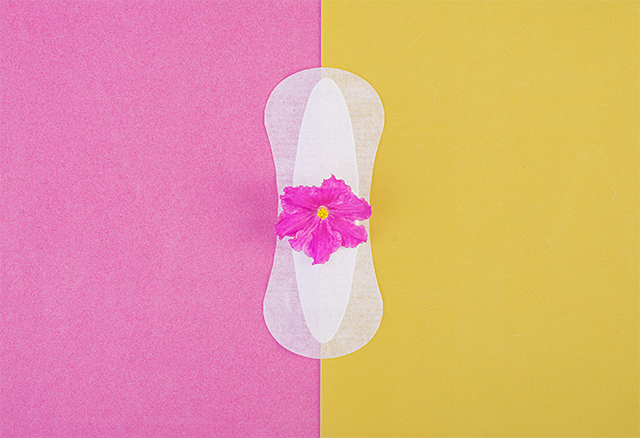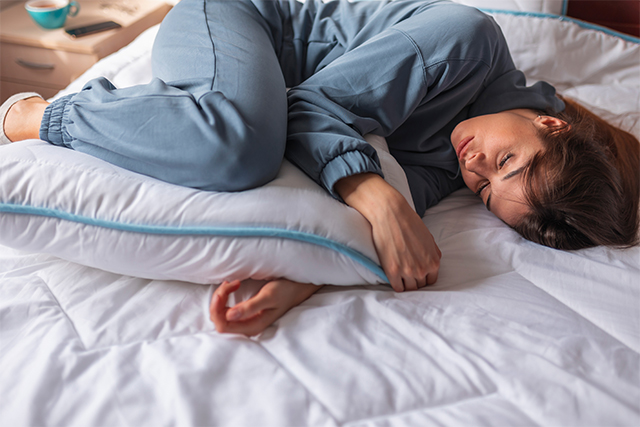What are the most common menstrual conditions?
To better understand what might happen during menstruation, it’s necessary to understand the terminology of the cycle.
What is the Menstrual Cycle?
A woman’s menstrual cycle is made up of four phases, menstruation (the actual bleeding), the follicular phase, ovulation, and the luteal phase.
Menstruation is when the body starts to bleed with the period. The thickened lining of the uterus is expelled from the body through the vagina, and during this time, that generally lasts between four days to a week, the uterus sheds this lining. The menstrual fluid contains blood, mucus, and the cells, endometrial cells, from the uterus.
The follicular phase is next and it starts on the first day of bleeding and ends with ovulation. During this time, the pituitary gland releases follicle stimulating hormone FSH, this hormone then stimulates the ovary to produce around 10 follicles which houses an immature egg. Usually only one of these follicles will mature into an egg which occurs around the 10th day of the 28 day cycle. The growth of the follicles then stimulates the lining of the uterus to thicken in case of pregnancy.
The Ovulation phase is the third in the cycle with the release of an egg from the surface of the ovary. This is around two weeks before bleeding. The egg is then released into the fallopian tube and towards the uterus, and the egg will typically live for around 24 hours, which is why women talk about a fertility window when thinking about pregnancy.
The Luteal phase is the fourth in the cycle and is when the follicle that released the egg stays on the surface of the ovary and creates a structure called the corpus luteum. This releases estrogen and progesterone and creates the thickening of the uterus lining to allow a fertilized egg to stick to the lining. If there is no fertilized egg, the corpus luteum is no longer needed and so dies and so the lining starts to shed, which is when there is menstruation.
There are a few common menstrual conditions
Premenstrual Syndrome or PMS is the most common of the conditions and occurs to 90% of women over the course of their lifetimes.
PMS or Premenstrual Syndrome is a combination of symptoms many menstruators have right before their period.
Most menstruators have some form of PMS and these can be physical or emotional symptoms. And women in their 30s and 40s are the most likely people to have worsening symptoms of PMS.
The physical symptoms can include cramping, headaches, bloating, tender breasts, and constipation. And the emotional symptoms of PMS include irritability, anxiety, stress, gloominess, and mood swings.
Dysmenorrhoea is a painful period. Researchers believe that this occurs when the uterus is told to squeeze harder than usual to push the lining out. If you believe that you have dysmenorrhoea go to your doctor and find your options to feel better.
Heavy menstrual bleeding is another menstrual problem that can occur and if it continues, go to your doctor right away.
Amenorrhoea is where there aren’t any menstrual periods. This is considered abnormal but could occur because of body weight or excessive exercise.
There is a solution to the most common Menstrual Condition, PMS
There is a new solution to premenstrual syndrome or PMS that doesn’t involve birth control, regulating your hormones, and is already found in every cell of your body.
Supplementing with OAA (oxaloacetate) may be an answer to helping with the emotional side of PMS, the anxiety, stress, and irritability associated with mood swings during that part of the menstrual cycle. And OAA is a part of the Krebs cycle, so you’re just adding something that you already have in your body.
This OAA supplement is the first of its kind and clinically proven in two double blind, placebo controlled, cross over design, and peer reviewed studies which saw an improvement in PMS related anxiety and gloominess by over 50%.
The OAA supplement, Jubilance for PMS, can help with the most common condition of the menstrual cycle and works to support women with its treatment.


